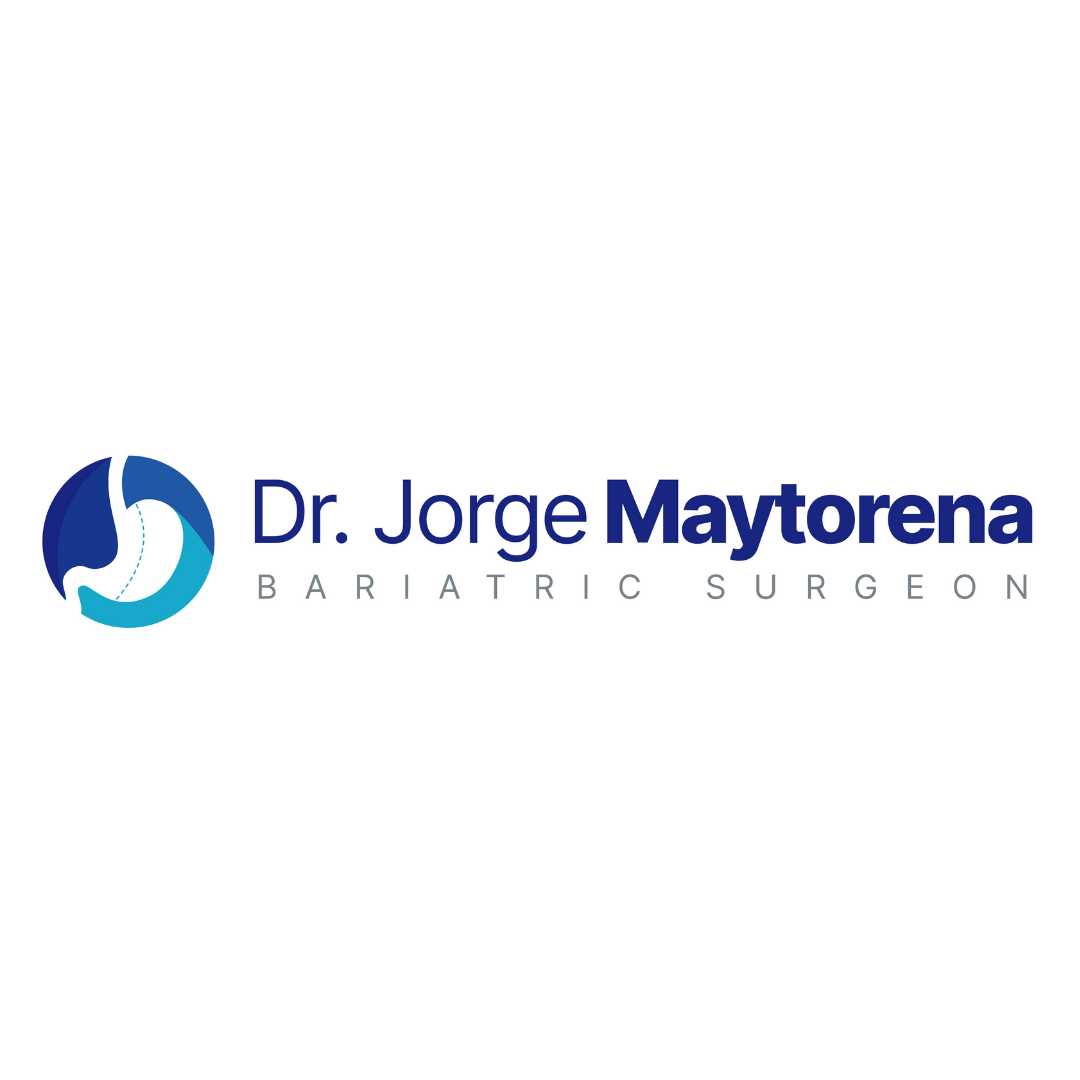
Are you struggling with excess weight? Have you tried diet after diet, only to feel frustrated? Maybe you've considered weight loss surgery, but the staggering costs in the United States feel like another mountain to climb. It's a tough spot to be in. Carrying extra weight doesn't just affect how you feel day-to-day; it significantly increases your risk for serious health problems.
But what if there was a safe, effective, and truly affordable solution within reach? There is! Thousands of people are finding new hope and transforming their lives with sleeve gastrectomy Mexico. This procedure, performed by skilled surgeons in modern facilities, offers a powerful tool for weight loss at a price that makes sense.
Let's explore what gastric sleeve surgery involves, why Mexico (especially cities like Tijuana) has become a top destination, and what you need to know to make an informed decision.
First Things First: What Exactly Is Gastric Sleeve Surgery?
You might hear it called gastric sleeve surgery or VSG (Vertical Sleeve Gastrectomy). It's one of the most popular types of weight loss surgery available today.
Think of your stomach like a stretchy bag. During gastric sleeve surgery, the surgeon removes a large part of that bag – often around 70-85%. What’s left is a much smaller, tube-shaped stomach, roughly the size and shape of a small banana.
How Does This Help You Lose Weight?
It works in two main ways:
- Smaller Stomach = Eating Less: With a much smaller stomach, you simply can't hold as much food. You'll feel full much faster, naturally leading you to eat smaller portions.
- Less Hunger Hormone: The part of the stomach that's removed is a major producer of ghrelin, often called the "hunger hormone." By removing it, the surgery significantly reduces hunger signals, making it easier to stick to your new eating plan.
What About the Surgery Itself?
The great news is that sleeve gastrectomy is usually done using laparoscopic surgery.
What Does Laparoscopic Mean?
Instead of one large incision, the surgeon makes a few tiny cuts (usually less than half an inch each). They then insert a small camera (laparoscope) and specialized long, thin instruments through these small openings. The camera sends images to a screen, guiding the surgeon as they perform the procedure inside your body.
Benefits of Laparoscopy:
- Minimal scarring (just tiny marks)
- Less pain after surgery
- Shorter hospital stays
- Faster overall recovery time
Because it's less invasive, laparoscopic surgery is generally considered safer than traditional open surgery.
Why is Sleeve Gastrectomy So Popular? The Amazing Benefits
People choose gastric sleeve surgery in Mexico for many compelling reasons:
- Dramatic Weight Loss: This isn't just losing a few pounds. Patients often lose 60-80% of their excess body weight within the first year or two! Many see significant results in just the first few months.
- Feeling Full, Not Famished: The smaller stomach and reduced hunger hormones make it much easier to control your appetite and feel satisfied with smaller meals.
- Major Health Improvements: This is perhaps the most life-changing benefit. Sleeve gastrectomy can dramatically improve or even resolve serious health conditions linked to obesity, such as:
- Type 2 Diabetes (Many patients see remission!)
- High Blood Pressure
- High Cholesterol
- Obstructive Sleep Apnea
- Joint Pain (especially knees and back)
- Heart Disease risk factors
- Fatty Liver Disease
- A Safer Profile: Compared to more complex surgeries like gastric bypass, the gastric sleeve generally has a lower risk of certain complications because it doesn't involve rerouting the intestines. This means less risk of nutritional deficiencies long-term.
- Improved Quality of Life: Imagine having more energy, moving more easily, feeling more confident, and potentially reducing or eliminating medications. That's the reality for many gastric sleeve patients.
Did You Know? Studies, like one cited by Tijuana Bariatrics from the World Journal of Gastrointestinal Surgery, have shown high effectiveness and safety rates for laparoscopic gastric sleeve, with over 98% of patients in that study showing effective results and zero complications over five years.
Why Consider Sleeve Gastrectomy in Mexico? The Tijuana Advantage
Okay, the benefits sound great, but why travel to Mexico? Cities like Tijuana have become leading hubs for medical tourism, especially bariatrics, for very good reasons:
- Huge Cost Savings: This is undeniable. The exact same gastric sleeve procedure performed by a board-certified surgeon in a modern hospital can cost $4,000 to $7,000 USD in Mexico. Compare that to the $12,000 to $25,000+ price tag common in the United States (as of early 2025). This massive difference makes life-changing surgery accessible.
- Highly Skilled Surgeons: Don't think lower cost means lower quality. Mexico boasts many highly experienced, often US-trained or board-certified bariatric surgeons who specialize in procedures like the gastric sleeve. Reputable providers vet their surgeons carefully.
- Modern, Safe Facilities: Leading bariatric centers in Tijuana operate in hospitals that meet international standards, often equivalent to US facilities. They use state-of-the-art equipment and adhere to strict safety protocols. Tijuana Bariatrics, for instance, emphasizes that their partner hospitals meet U.S. standards.
- All-Inclusive Packages: Many Mexican providers offer packages that bundle the costs of surgery, surgeon fees, anesthesia, hospital stay, pre-op tests, ground transportation (like airport pickup), and even hotel accommodation. This makes planning much simpler and pricing transparent.
- Experience and Volume: Top centers in Tijuana perform a high volume of bariatric surgeries. This experience translates to streamlined processes and surgeons who are experts in their field. Tijuana Bariatrics mentions coordinating over 12,000 successful surgeries.
- Accessibility: For many Americans, especially those in southern states, Tijuana is relatively easy to travel to.
Why is it Cheaper in Mexico? It's mainly due to the lower cost of living and operating expenses (staff salaries, administrative costs, building costs) compared to the US. Plus, the competitive medical tourism market encourages efficient, value-driven pricing.
What Happens During the Surgery? A Step-by-Step Look
Knowing what to expect can ease anxiety. Here’s a simplified timeline of the sleeve gastrectomy procedure:
- Getting Comfortable: You'll receive general anesthesia, meaning you'll be completely asleep and won't feel anything during the surgery.
- Tiny Incisions: The surgeon makes a few small keyhole incisions in your abdomen.
- Camera In: A laparoscope (tiny camera) is inserted through one incision so the surgeon can see inside your body on a monitor.
- Gentle Work: Using specialized instruments through the other small incisions, the surgeon carefully separates and removes about 70-85% of your stomach.
- Creating the Sleeve: The remaining portion of the stomach is expertly shaped into a narrow tube or "sleeve."
- Securing the Sleeve: The new stomach sleeve is sealed securely using surgical staples. Surgeons perform tests during the procedure to ensure there are no leaks.
- Finishing Up: The instruments and camera are removed, and the small incisions are closed with stitches or surgical glue.
The entire surgery usually takes about an hour or two.
Could Sleeve Gastrectomy Be Right for You? Understanding Candidacy
Weight loss surgery isn't for everyone. Reputable surgeons and centers have specific criteria to ensure the procedure is safe and appropriate for you. Generally, you might be a candidate for sleeve gastrectomy if:
- You Have Significant Weight to Lose:
- Your Body Mass Index (BMI) is 40 or higher (Class III Obesity).
- OR Your BMI is 35-39.9 (Class II Obesity) AND you have at least one serious obesity-related health condition (like type 2 diabetes, high blood pressure, severe sleep apnea, heart disease).
- Some surgeons may consider patients with a BMI of 30-34.9 if they have significant health issues related to weight, but this is less common.
- You've Tried Other Methods: You have a documented history of trying to lose weight through diet and exercise without long-term success.
- You're Committed to Change: You understand that surgery is a tool, not a magic wand. You must be ready and willing to make lifelong changes to your eating habits and activity levels.
- You're Healthy Enough for Surgery: You don't have any medical conditions that would make surgery too risky, and you are free from untreated drug or alcohol dependency.
- You're Informed: You understand the procedure, the risks, the benefits, and the recovery process involved, including the requirements for traveling to Mexico if applicable.
- Age: You are typically between 18 and 65 years old (though exceptions are sometimes made).
Quick Guide: Understanding BMI
BMI (Body Mass Index) is a common screening tool that uses your height and weight to estimate body fat.
- Under 18.5: Underweight
- 18.5 - 24.9: Healthy Weight
- 25 - 29.9: Overweight
- 30 - 34.9: Class I Obesity
- 35 - 39.9: Class II Obesity
- 40 and above: Class III Obesity (formerly "morbid obesity")
While BMI isn't perfect (it doesn't distinguish muscle from fat), it's a useful starting point for assessing weight-related health risks and surgical candidacy.
The best way to know for sure if you qualify is to have a consultation with a qualified bariatric surgeon or coordinating service.
What to Expect After Surgery: Your Recovery Journey
Recovery from gastric sleeve is a process that requires patience and careful adherence to your surgeon's instructions. Here’s a general timeline:
- Hospital Stay: Usually 1-2 nights for monitoring. You'll start sipping clear liquids.
- Week 1: At home, focus on rest and hydration. Clear liquids only (water, broth, sugar-free gelatin). Avoid caffeine, carbonation, and sugar. Start gentle walking.
- Week 2: Progress to pureed foods (smooth consistency, like baby food) and protein shakes. Continue prioritizing fluids.
- Weeks 3-4: Introduce soft solid foods (e.g., scrambled eggs, flaky fish, well-cooked soft vegetables, cottage cheese). Chew everything thoroughly! Still avoid tough meats, fibrous vegetables, nuts, bread, pasta, sugary/fatty foods.
- Month 1-2: Gradually transition to regular solid foods, focusing on protein first at each meal. Portions will be VERY small initially (maybe a few tablespoons). Learn your new stomach's signals. Activity can slowly increase as approved by your doctor.
- Ongoing: Establishing your long-term healthy eating plan. Regular exercise becomes crucial for continued weight loss and maintenance.
Life After Gastric Sleeve: The New Normal
Adjusting to life with a smaller stomach takes time. Key changes include:
- Tiny Portions: You'll eat much less than before, permanently.
- Mindful Eating: Eating slowly and chewing thoroughly is essential to avoid discomfort.
- Nutrient Focus: Prioritize protein, fruits, and vegetables to get essential nutrients from smaller volumes of food.
- Vitamin Supplements: Lifelong vitamin and mineral supplementation is usually required to prevent deficiencies.
- Regular Follow-Up: Staying connected with your surgical team or primary care doctor is important.
Let's Talk Cost: The Financial Advantage of Mexico
As mentioned, the cost difference is dramatic. Let's put some numbers on it (Note: prices are estimates as of early 2025 and can vary):
- Sleeve Gastrectomy Cost in Mexico:
- Typical Range: $4,000 - $7,000 USD
- Example All-Inclusive Package (like Tijuana Bariatrics offer): Around $4,350 USD
- Sleeve Gastrectomy Cost in the USA:
- Typical Range: $12,000 - $25,000+ USD (often higher depending on location and insurance)
What's Usually Included in a Mexico Package? Reputable providers often include:
- Surgeon's fees
- Anesthesiologist's fees
- Hospital fees (including operating room, recovery room, hospital stay)
- Pre-operative tests (blood work, EKG)
- Post-operative medications (while in Mexico)
- Ground transportation (airport-hotel-hospital)
- Hotel stay (often 1-2 nights pre/post-op)
- Support from coordinators
This bundled approach makes high-quality bariatric surgery a realistic option for many who couldn't otherwise afford it. The significant savings allow patients to invest in their health without facing crippling debt.
Considering Safety and Potential Risks
Every surgery has potential risks. For gastric sleeve, these can include:
- Staple line leaks: Where the sealed stomach line doesn't heal properly (rare with experienced surgeons).
- Bleeding: As with any surgery.
- Infection: At incision sites or internally.
- Blood clots: Prevented by walking early and sometimes blood thinners.
- Strictures: Narrowing of the sleeve over time.
- Nutritional deficiencies: Managed with lifelong supplements.
- Acid reflux: Can sometimes develop or worsen after surgery.
Minimizing Risks: Choosing a highly experienced, board-certified surgeon and a reputable, well-equipped hospital drastically reduces these risks. Following all pre-operative and post-operative instructions carefully is also crucial. Discuss potential risks thoroughly with your surgeon.
Are There Alternatives to Gastric Sleeve?
Yes, other bariatric procedures exist, though the sleeve is often favored for its balance of effectiveness and lower long-term complication risk compared to bypass. Alternatives mentioned by providers like Tijuana Bariatrics include:
- LAP-BAND® (Adjustable Gastric Band): A silicone band placed around the upper stomach. Reversible, less weight loss typically than sleeve.
- Gastric Sleeve Plication: Folding the stomach wall inward to reduce size without removing tissue. Reversible.
- SADI-S: Combines a sleeve with a bypass of part of the intestine. More complex, offers potentially greater weight loss but higher risk of nutritional issues.
- Gastric Bypass (Roux-en-Y): Creates a small stomach pouch and reroutes the intestine. Highly effective but more complex and higher long-term risks than sleeve.
- Mini Gastric Bypass: A variation of the bypass procedure.
Discussing these options with a surgeon helps determine the best fit for your individual health profile and goals.
Frequently Asked Questions (FAQs) about Sleeve Gastrectomy Mexico
Q: Is Tijuana genuinely safe for medical tourists seeking bariatric surgery?
A: Yes, Tijuana has well-established infrastructure for medical tourism, particularly bariatrics. Reputable clinics and hospitals prioritize patient safety, maintain high standards often comparable to the US, and have extensive experience treating international patients. Like any travel, standard precautions are wise, but the areas catering to medical tourists are generally secure, and providers often arrange all transportation, minimizing your need to navigate unfamiliar areas alone. Focus on choosing vetted providers with excellent track records.
Q: How do I choose a reliable surgeon and clinic in Mexico?
A: Research is key! Look for board-certified surgeons with extensive experience specifically in sleeve gastrectomy. Check credentials and affiliations. Read patient reviews from multiple independent sources (not just the clinic's website). Look for established clinics or medical tourism facilitators (like PlacidWay) that partner with accredited hospitals meeting international standards. Don't hesitate to ask detailed questions about their safety protocols, complication rates, and surgeon experience during your consultation.
Q: What kind of support can I expect after returning home from Mexico?
A: This varies, but good providers offer post-operative support. This often includes detailed dietary guidelines, access to nutritionists (sometimes remotely), and communication channels (email, phone) for questions. Some facilitate virtual support groups. However, you will also need to establish care with your local primary doctor for long-term monitoring, lab work, and any immediate non-emergency concerns. Ensure you understand the follow-up process before booking.
Q: Will I have a lot of loose skin after losing so much weight?
A: Significant weight loss often results in loose skin, especially around the abdomen, arms, and thighs. The amount varies depending on factors like age, genetics, how much weight is lost, and skin elasticity. While exercise can tone underlying muscles, it doesn't typically tighten loose skin significantly. Some patients eventually opt for plastic surgery (like a tummy tuck or body lift) to remove excess skin once their weight stabilizes, often about 18-24 months post-op.
Q: Is it possible for the stomach sleeve to stretch out over time?
A: The stomach is a muscular organ and can gain some elasticity over time. Consistent overeating or poor food choices (like frequent high-calorie liquids or soft foods) can lead to some stretching of the sleeve, potentially reducing the surgery's effectiveness and causing weight regain. This highlights why adhering to the recommended portion sizes, eating habits, and lifestyle changes is crucial for long-term success after sleeve gastrectomy.
Ready to Take Control? Explore Sleeve Gastrectomy in Mexico Today!
Sleeve gastrectomy offers a powerful, life-changing opportunity to overcome obesity, reclaim your health, and live life more fully. Choosing to have this procedure in Mexico makes it an affordable reality for many who thought it was out of reach. With experienced surgeons, modern facilities, and incredible cost savings, it's a path worth exploring.





.png)











Share this listing